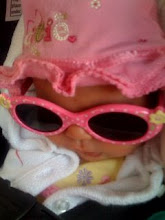View Larger Map
The islands were directly hit recently by a hurricane recently, so the coral was not in good shape, but it was still in better shape than the inshore reefs we saw in Anguilla. The shore is developed with villas and homes, so that cannot help either. There were a lot of fish to see, including a good number of small groupers, a small moray, and a juvenile blue angelfish, so fish watching was a lot of fun. I saw no spiny lobsters at all, which was surprising, and no lionfish, which was a pleasant surprise. I also noticed a large yellow octopus down in a cave, probably the biggest one I've seen while diving.
The macroalgae had not overgrown the dead coral and rock here as badly as in Anguilla, but there was very little surviving brain coral and no Acropora corals at all. There were some isolated massive star corals (Montastrea sp.) however they seemed not to be growing back well, and a couple were visibly bleaching/receding. There were surprisingly few parrotfish and Diadema sea urchins, so maybe that's why. Diadema urchins and parrotfish are important species in controlling algae that can otherwise overgrow and smother reef buildiung corals.
There was a great diversity of gorgonians, though few sea fans, and the Porites astreoides (mustard hill coral) seemed to be growing back very well. These colonies were all over the place, and were a vivid yellow color.
Apologies for the lack of photos. Our underwater camera broke, so these pictures are similar photos linked from other web sites.
Here are a couple of relevant links if you are interested in coral reef recovery and conservation. Hopefully we can dive at the Coral Gardens before we leave, and post a description of that dive as well.
Coral Restoration Foundation in the Florida Keys
Write-up of a study of near shore coral habitats from the U of Miami, found by accident in looking for photos to link. :) Near shore Coral and Epifauna Diversity

No comments:
Post a Comment